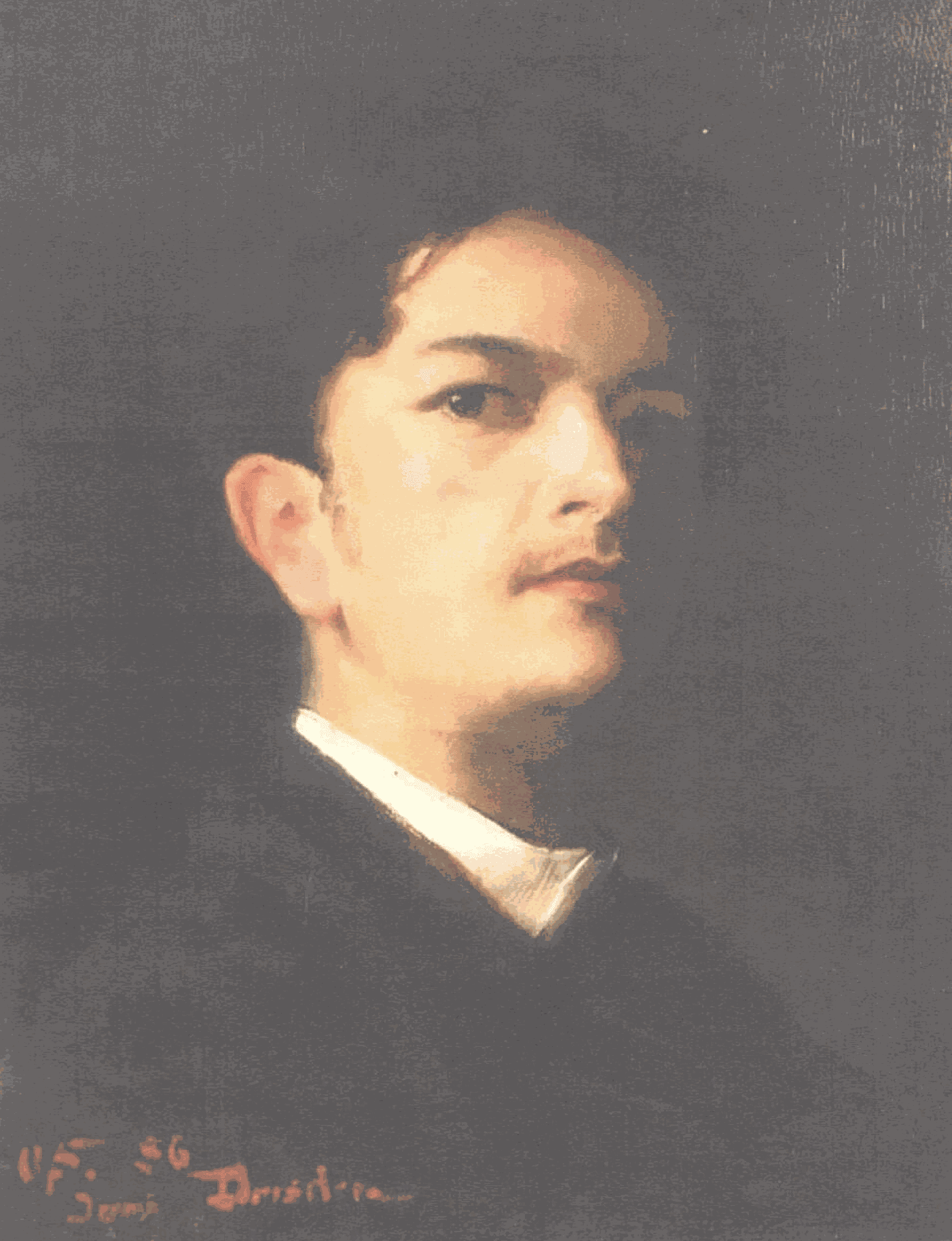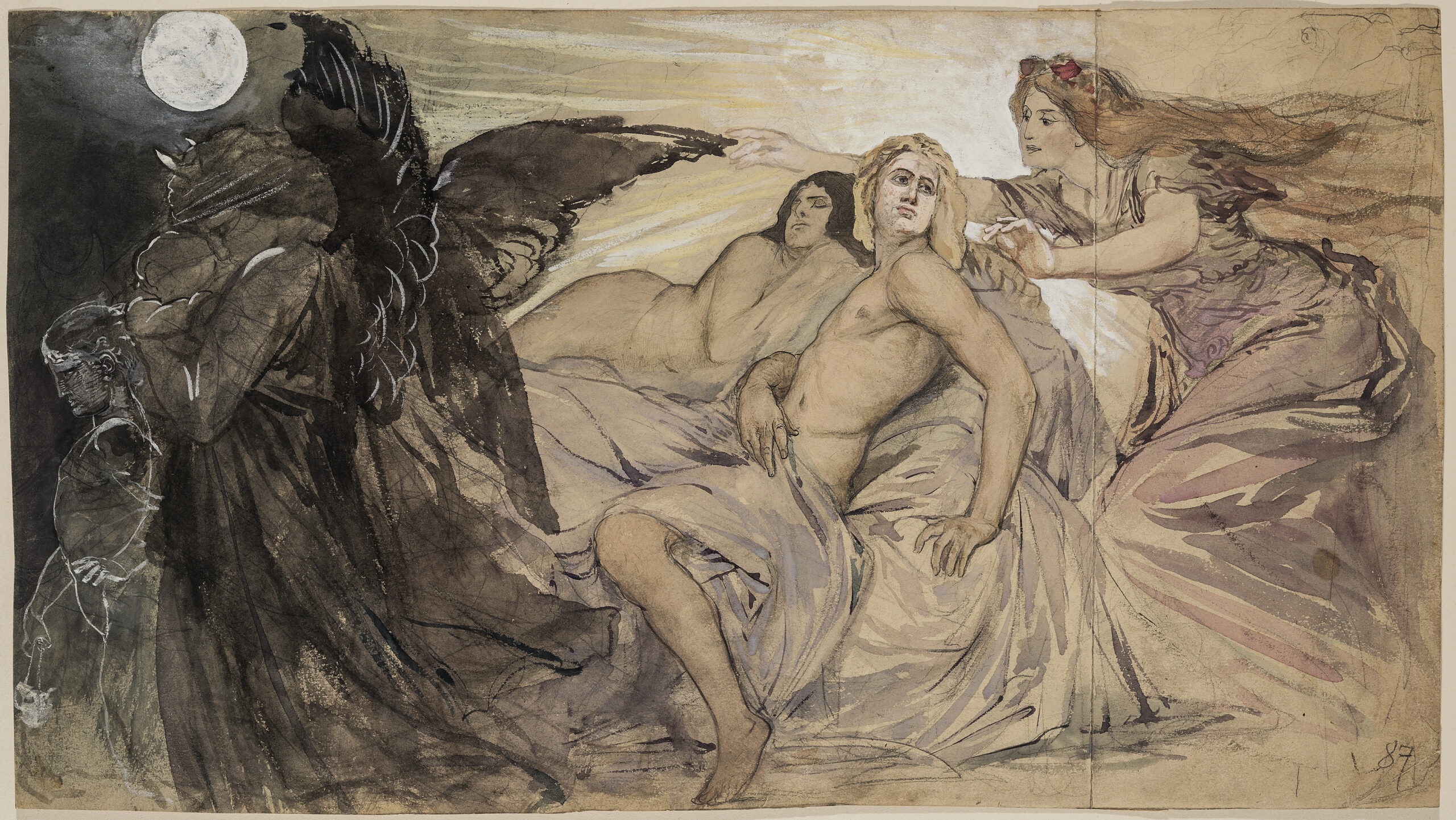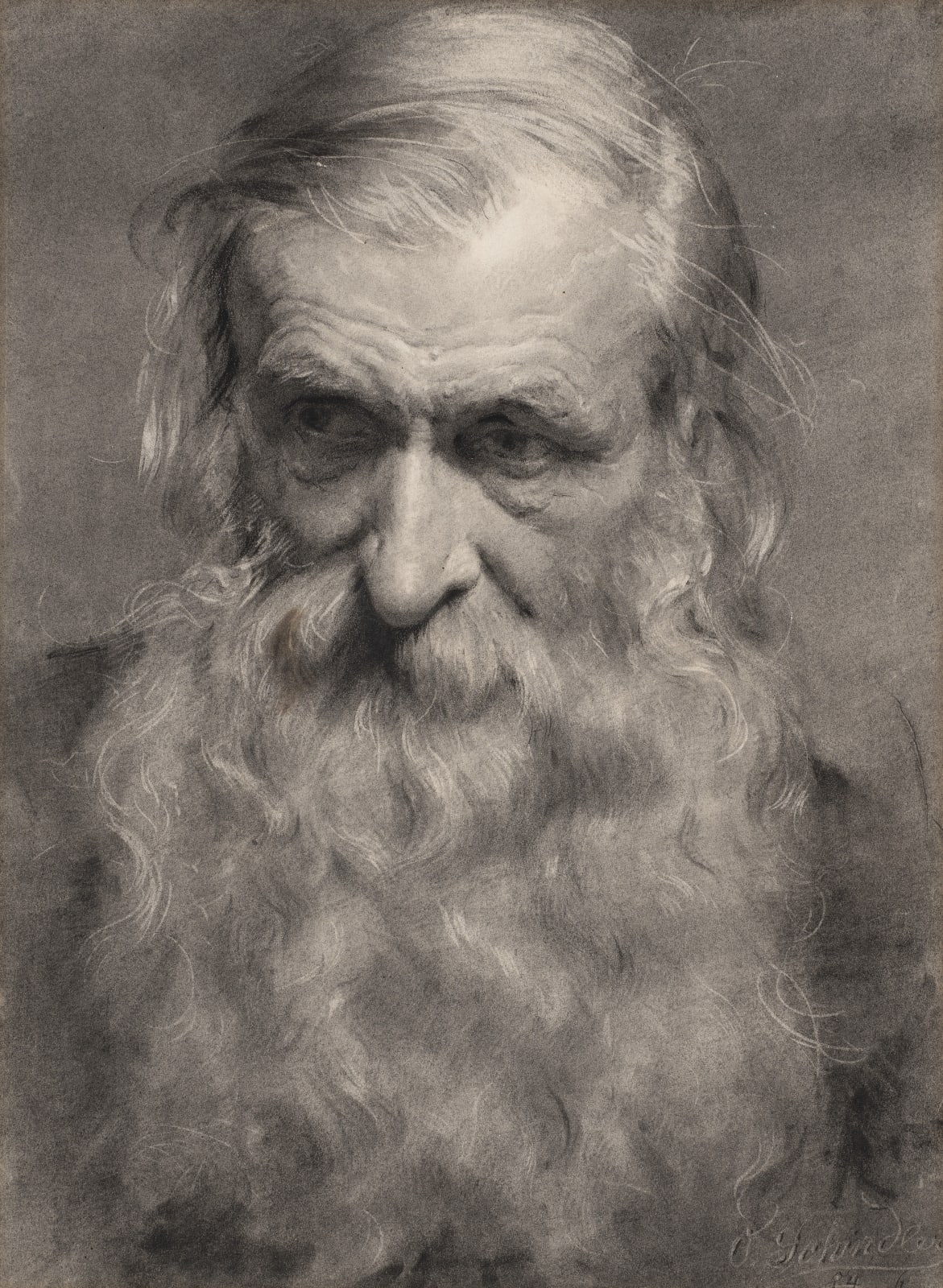Osmar Schindler (1867 – 1927)
Head study of a bearded man
Signed and dated lower right: O. Schindler / 84
Charcoal and white chalk on paper
43.6 x 33.4 cm. (17 ½ x 13 in.)
Provenance:
Head study of a bearded man
Signed and dated lower right: O. Schindler / 84
Charcoal and white chalk on paper
43.6 x 33.4 cm. (17 ½ x 13 in.)
Provenance:
Estate of Osmar Schindler, Dresden, 1927;
Thence by descent in his family, Dresden, until 2021.
This highly accomplished chalk study of a bearded man was drawn by Osmar Schindler in 1884, when the artist, then 17 years old, was a student at the Dresden Kunstakademie. The study was no doubt executed during a life drawing class at the Kunstakademie, with the model therefore being a professional. With its attention to detail, and understanding of light, modelling and volume, the drawing is evident of Schindler’s precocious talents whilst still a teenager.

Fig. 1, Osmar Schindler, Self-portrait, 1886, oil on canvas, private collection
At the time, as is still the case today, the Dresden Kunstakademie was one of the most eminent art schools in the newly unified Germany. Fellow students of Schindler included Hans Unger, Richard Mûller and Sascha Schneider; like Schindler little-known figures today but at the time important and celebrated practitioners on a European level, who worked in an Art Nouveau and Symbolist style. Schindler was more traditional than these three, usually working using Impressionistic or Realistic idioms, though occasionally exploring more Symbolist and Art Nouveau subjects and techniques. His subject matter was diverse, from portraits and landscapes, to religious and mythological scenes.
Schindler was born in Burckhardtsdorf, a small town 90 kilometres west of Dresden. Losing his father at an early age, Schindler was able to attend the Dresden Kunstakademie thanks to support from his uncle. Dresden was a major economic hub which, when combined with the young artist’s technical skill, ensured that there were no shortage of commissions and commercial opportunities for Schindler upon graduation from the Akademie. His success allowed him to travel widely in Europe in the 1890s, and he became particularly enraptured by Italy, returning there often. By 1900, Schindler had been appointed a professor at the Dresden Kunstakademie, remaining there for the rest of his life, teaching many students, the most famous of whom were George Gros and Otto Dix.
At the Akademie, Schindler was in charge of the life-drawing class, so the present work is a particularly interesting early drawing, given it was itself produced during a life-drawing class, and is evident of the particular talents for drawing that Schindler had acquired by an early age, and which he would retain throughout his life. As with most traditionally trained artists, drawing remained a cornerstone for Schindler’s artistic practice, and he would invariably start any painting with a series of graphic studies (fig. 2).

Fig. 2, Osmar Schindler, The Triumph of Aurora, 1887, watercolour on paper, 27.5 x 49.5 cm, private collection
